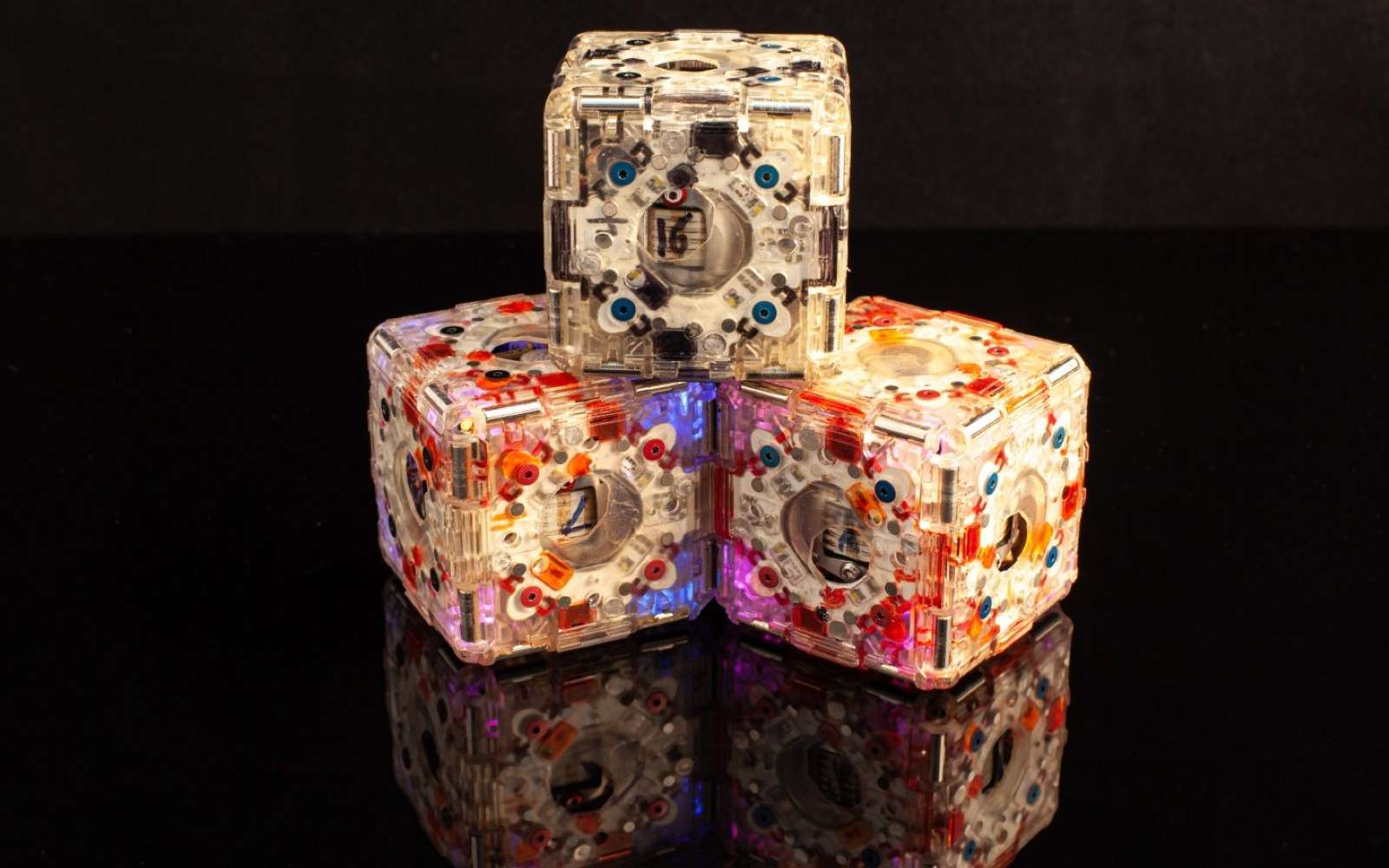Like magic, robots are able to coordinate to assemble and create shapes. M-Blocks use magnets and barcodes to communicate and stick to each other. MIT researchers are already imagining uses as part of a rescue operation where they could be transformed into stairs.
Sometimes, many small robots are much more suited to a situation and easier to produce than a large, complex robot. Different research works, therefore, try to develop swarms of robots of various forms, and artificial intelligence systems to control them. A team of researchers at the Massachusetts Institute of Technology (MIT) has been working for six years on small cubic robots called M-Blocks. They created an autonomous swarm of 16 cubes, able to stand in a straight line, follow arrows or move towards the light.
Most modular robotic systems use small arms and require a lot of coordination. Rather than opting for external actuators for travel, the researchers opted for an inertia flywheel inside that rotates at 20,000 rotations per minute. By braking the steering wheel, the cube creates angular inertia that moves it. The flywheel has been designed to allow this small robot to move in the four cardinal directions, regardless of the face on which it is placed.

Cubes that move like magic
A magnet on each side allows robots to bind to other cubes. In addition, they can climb on each other and even jump and twirl to create structures. One of the researchers, Daniela Rus, says that in the name M-Block, the “M” means both motions, because cubes move, magnet (magnet), robots binding to each other by magnets, and magic, because, from the outside, they have no moving parts: ” The cubes seem to move like magic . “
Unlike other robots, M-Block do not communicate with radio waves that lack precision. With many small robots in a small space, the different signals are parasitic and confusing. The researchers abandoned the more advanced solutions and implemented a simple barcode system on each side of the cubes. The robots can, therefore, recognize themselves and can even identify with which face of the cube they are in contact.
A system that could reach a million robots
Without external moving parts, each cube is much stronger. They are therefore less likely to be damaged and require maintenance; their simple form makes it possible to assemble any number. ” The unique thing about our approach is that it is inexpensive, robust and can potentially adapt more easily to a million modules, ” said John Romanishin, a Ph.D. student working on the project.
The researchers demonstrate this in a video and imagine the M-Blocks assisting relief operations. For example, they would be thrown into a burning building and they could assemble to replace a collapsed staircase or to access the roof. They could also be used in other areas, such as manufacturing, health or video games.